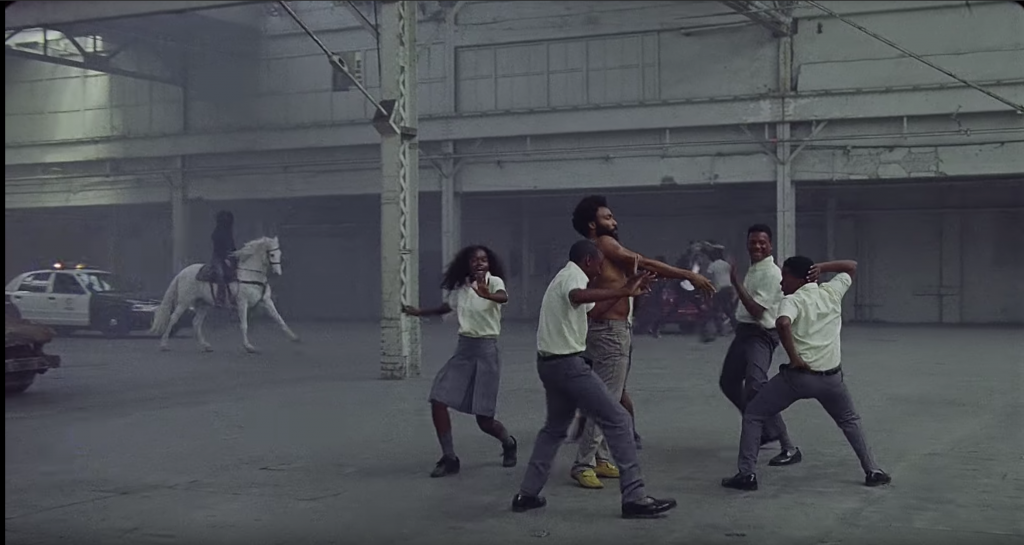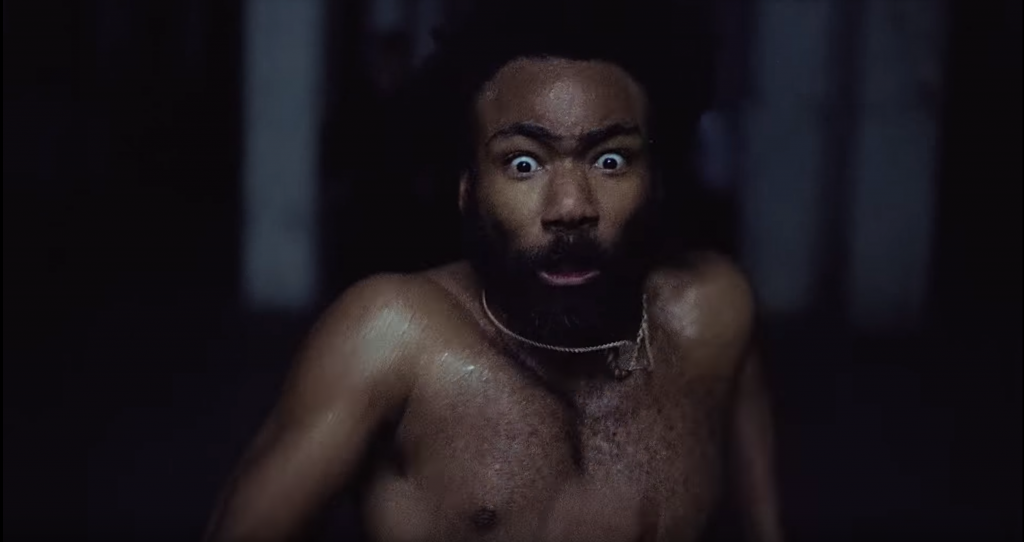I still remember the first time I watched the music video of This is America. It was sometime last year; I was getting ready for bed and decided, foolishly, to watch this trending video on Youtube. I stayed up an hour later than I wanted to because of how disturbed and uncomfortable I was after watching the video.
Warning: This video contains graphic content
Donald Glover (otherwise known by his stage name Childish Gambino) released the This is America and the accompanying music video early May last year. Known for its political stance on gun violence, police brutality and racism in America, the song debuted at number one on Billboard Hot 100 chart, won four prestigious Grammy awards, and has nearly 520 million Youtube views today. The one-take music video, directed by Japanese-American filmmaker Hiro Murai, generated so much attention that TIME magazine even released an article analyzing the different strands of symbolism found over the short four minutes.
For the sake of research (and a solid thesis), I decided to experience This is America two different times:
1) Listening to This is America on its own while reading the lyrics without the music video
2) Listening to This is America with the music videowhile reading the lyrics (some would call it multitasking)
Upon my experiment, I can wholeheartedly say that the accompanying music video certainly increases the impact of the political message embedded in the song.
SHOTS FIRED: THE PLAY BETWEEN TEXTURES
This is America’s most recognizable feature is arguably the stark textural contrast between different textures of the song. The song opens with inviting “yeah-yeah-yeahs” by the choir, some fun guitar accompaniment, and the catchy use of call-and-response. This cheerful introduction is immediately interrupted by an invasive bass (rooted in Trap music) and Childish Gambino’s “This is America, Don’t catch you slippin’ up…”. The juxtaposition of musical genres provide a jarring, uneasy feeling that perhaps mirror the disjointed American society that we live in today.

Murai utilizes this discomfort and elevates it on a whole new level: the video begins with a man playing the guitar in a warehouse and Glover dancing to the (deceivingly) joyful song…before he pulls out a gun and shoots the man wearing a head cover and hand cuffs to open the trap section of the song. Perhaps the man is a reflection of those who are wrongfully accused of a crime due to the color of their skin. Perhaps it’s a statement on how easy it is for people to access a gun. Regardless, what a statement.
DANCING AND VIOLENCE: ENTERTAINMENT AND IGNORANCE
Throughout the music video, Childish Gambino is seen dancing with school children (smiling in a way that sends shivers down your spine) throughout the warehouse as violence and gang activity break out around them. Fires, people running, police cars and horses… you name it.

These shots send an incredibly powerful strong message about entertainment and how the majority of society approach racism, police brutality and gun violence today. The fact that Childish Gambino and the children are dancing in the midst of violence without a sense of reality is incredibly oblivious, almost as if they are choosing to ignore issues that affect millions of African-Americans everyday. Not only does such visuals draw viewers in, but it further accentuates the song’s political innuendos.
WAIT, THERE’S MORE: WHAT IS WITH THIS ENDING?

The video ends with Childish Gambino running away from a dark room (with some recognizing it as the mental prison that black people get sent to in Get Out) from a group of authoritative figures. Wide-eyed and scared, Glover is running into an abyss with no light at the end of the tunnel.
You just a black man in this world, You just a barcode, ayy
You just a black man in this world, Drivin’ expensive foreigns, ayy
The declaration of the video to African-Americans is clear: You can, and never will, escape America.
